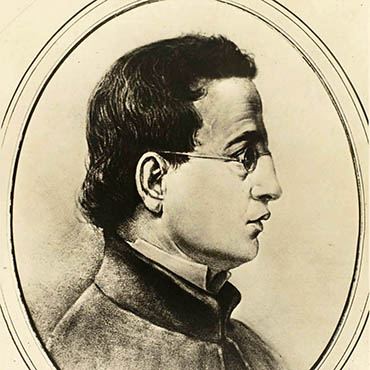Eugenio Barsanti was born at Pietrasanta in 1821 and studied with the Piarists, where he showed a particular talent for mathematics. In 1841, after being ordained, he started teaching: his first post was at the Collegio San Michele at Volterra, and then, from 1848 in Florence at San Giovannino, he taught moral philosophy and geometry and later mathematics and applied sciences.
He was a clever physicist and investigated the possibility of burning a mixture of hydrogen and air in order to obtain motive power. Working with Felice Matteucci, he planned a device that was a forerunner of the internal combustion engine. In 1853 the first prototype was built at the Pignone foundry and was patented in England the following year and subsequently in other European countries. The new invention spread throughout Europe with many applications. Meanwhile Barsanti, together with Matteucci and later with Giovan Battista Babacci, set up the Società del nuovo motore, whose shareholders even included people from abroad. A version of this engine, built in Milan by the company that would later become the Società Breda, won a silver medal at the Istituto lombardo di scienze e lettere.
In 1864 he travelled to the town of Seraing near Liège, home of the John Cockerill workshop, where he was expected to activate an engine that had already been built there, but he did not survive an attack of typhoid fever and died without seeing his invention going into production. Raffaello Caverni had attended his lessons at San Giovannino, and remained fond of him for all his life, so much so that he kept his photograph by his death bed.

